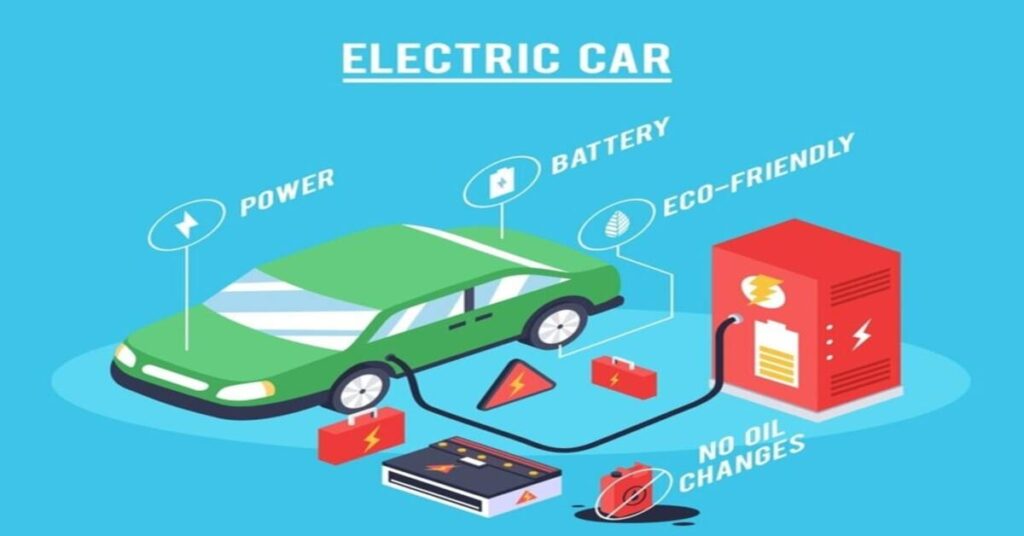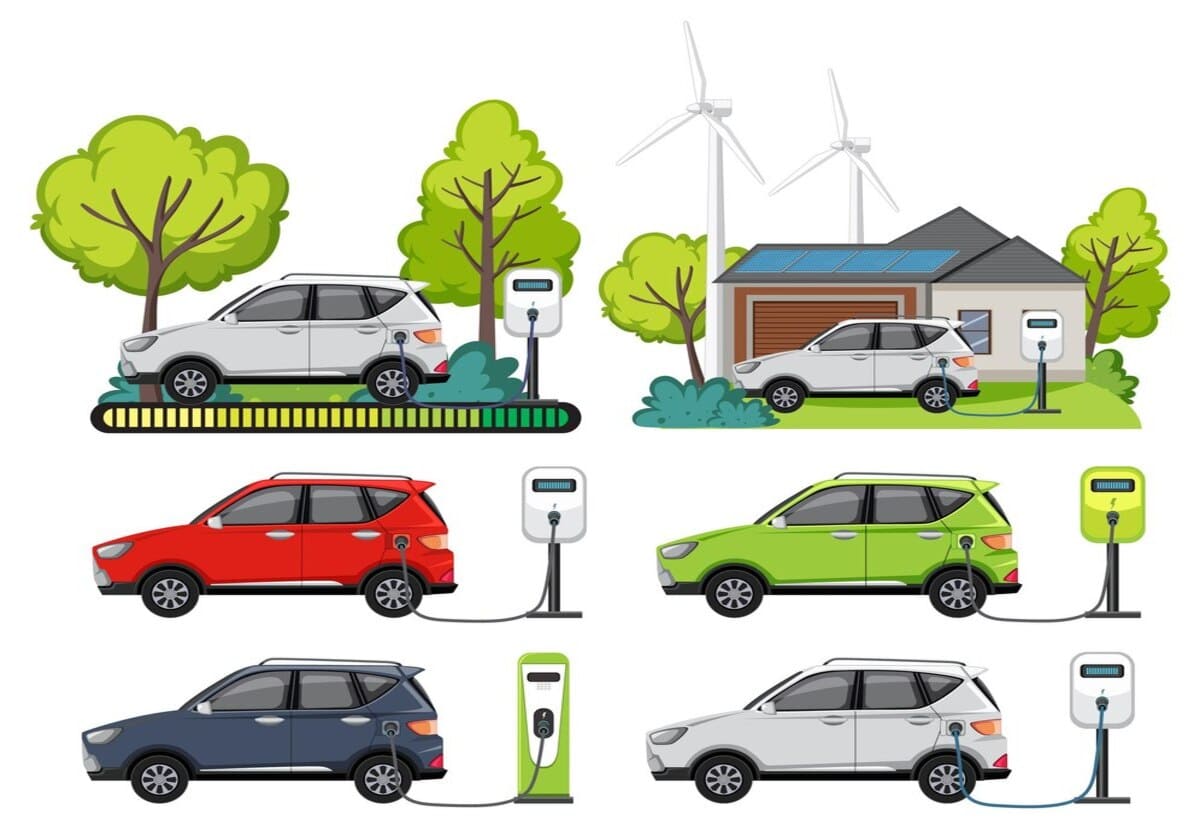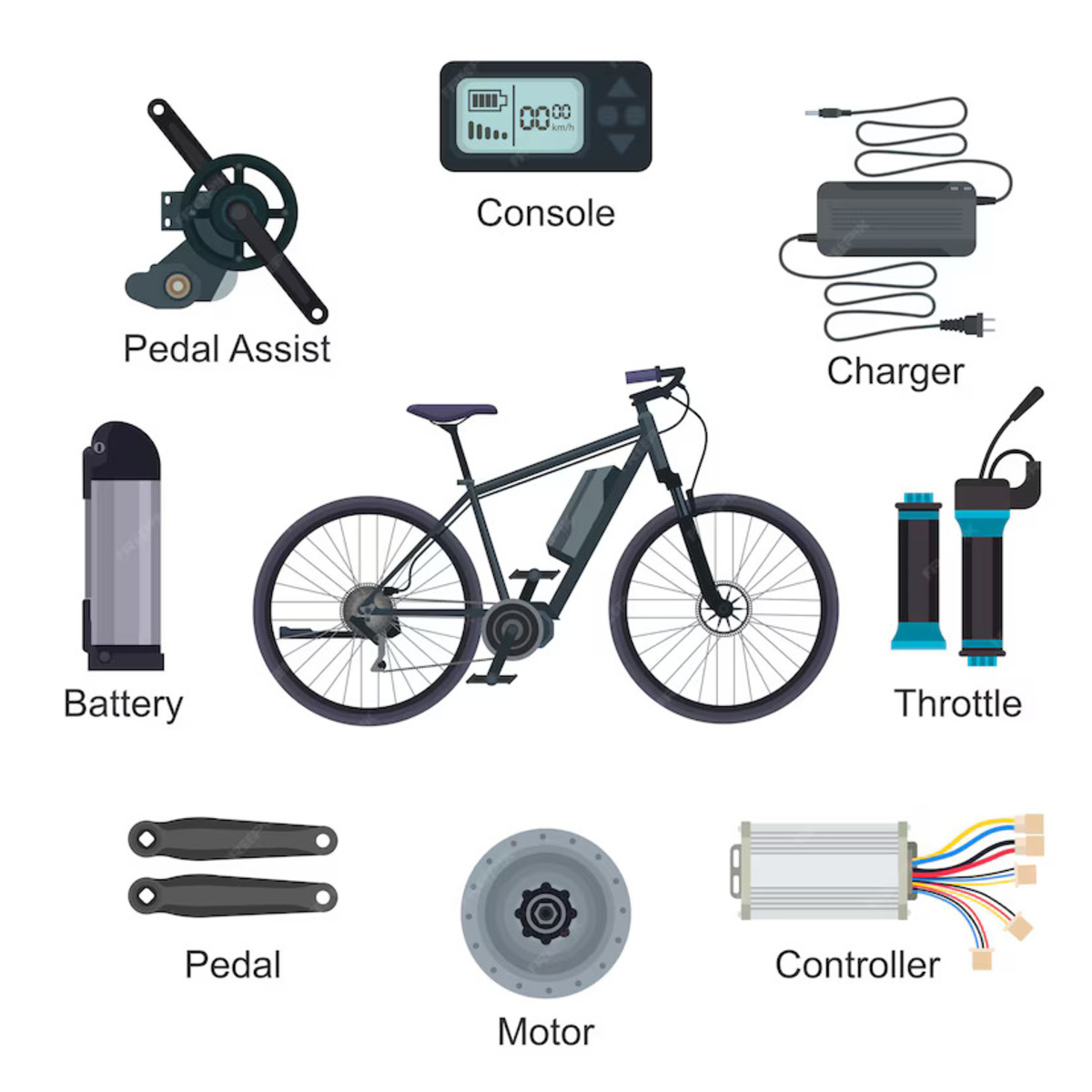People can travel to their desired destination by means of transportation, and efficient transportation supports economic expansion. Electric vehicles are gaining popularity as they are astoundingly silent and environmentally friendly. There are several different types of electric vehicles available today, with battery electric and plug-in hybrid vehicles being the most prevalent in the consumer vehicle classification. Electric automobiles employ electric motors instead of gasoline engines.
Major firms have committed to electrifying their fleets for economic and ecological reasons, creating a consistent supply of demand. Consumer eco-awareness and the appeal of sustainable transportation are increasing as they reduce carbon footprints. Let us look at different types of electric vehicles.
Also read:
Use of Artificial Intelligence in Electric Vehicle
How To Apply For Tata EV Charging Station Franchise
Complete Guide Of Solar EV Charging Stations
10 Reasons Electric Cars Will Be Cheaper
Different Types Of Electric Vehicles

- Battery-Electric Vehicle
- Plug-in Hybrid Electric Vehicle
- Hybrid Electric Vehicle
- Fuel Cell Electric Vehicle
Now let us discuss the above different types of electric vehicles in detail
1. Battery-electric vehicle (BEV)
It is also known as an ‘all-electric car’, so it is fully dependent on battery charging. Because BEVs lack an internal combustion engine, battery-powered electric cars get recharged on the electricity grid. A battery pack stores the electricity that powers the motors. The motor’s rapid torque enables BEVs to avoid complex multi-gear transmissions and instead employ a single-speed reduction gear.
How does a battery-electric vehicle work?
The electric motor helps convert the power from the DC battery to AC. When you press the accelerator, the controller gets a signal to adjust the speed of the vehicle and transforms the frequency of the AC power into a motor. Then the motor helps with the turning of the wheels with a cog. If you press the brake to decelerate the car, the motor works as an alternator and generates power.
Features:
Battery-electric vehicles can leverage renewable energy sources when charging. It provides strong performance with instant torque and improves local air quality. It emits no harmful gases, and the maintenance cost is very low.
Main Components:
Battery pack, electric motors, inverter, control module, drive train, and charge port are the main components of a battery-powered electric vehicle.
Examples:
Tata Nexon EV, Hyundai Kona, Tata Tiago EV, Tata Tigor EV, Mahindra XUV 300 EV, Mercedes-Benz EQB, MG ZS EV, and Kia EV6 are examples of battery-electric vehicles.
2. Plug-in hybrid electric vehicles (PHEVs)
PHEVs are equipped with two power sources: an electric motor and an internal combustion engine. It has a higher-capacity battery compared to hybrid electric vehicles for storing electricity. The higher capacity of the battery allows it to cover a longer distance in electric mode.
When you press the brakes, the motor serves as a generator, using the energy to charge the battery pack. The electric motor increases engine power, improving vehicle efficiency and performance.
The energy is captured while the electric motor is braking to recharge the battery, which helps maximize EV range. Some plug-in vehicles can travel more than 70 km with the use of electricity.
How does a plug-in hybrid electric vehicle work?
Depending on the driving conditions, a smart controller unit decides whether the electric motor alone or together with the combustion engine should parallel the vehicle.
The car is driven with electric power until the battery reaches low levels of energy, and when the battery is at low levels, the gasoline engine works together with the electric motor to get the vehicle up to the desired speed. A gasoline engine generates propulsion power when higher speeds are required. The gasoline mode becomes the main source of driving when the battery is exhausted, and the regenerative braking system captures energy and stores it in the battery for further use.
The high-voltage battery either emits or stores energy. When the electric motor is running, the high-voltage battery emits energy. While driving, the battery gets partially charged through regenerative braking.
The charging can be simply performed at any place with an installed domestic electricity socket, or it can be conveniently charged at public charging stations. You should not press the start/stop button during charging.
Features:
PHEVs reduce range anxiety as they offer the backup of a gas engine with an electric battery. Plug-in hybrid electric vehicles provide cost efficiency.
Main components:
Internal combustion engine, electric motors, battery pack, invertor, control module, drive train, fuel tank, charge port, and exhaust system are the main components of plug-in hybrid electric vehicles.
Examples:
Volvo XC90 Recharge, BMW i8, BMW 330 E, Toyota RAV4, Hyundai Sonata, Fiat 500e, BMW 7, Chevy Bolt, Mercedes C350e, Mercedes S550e, Mercedes GLE550e, and Audi A3 E-Tron run on plug-in hybrid electric vehicles.
3. Hybrid electric vehicle (HEV)
Hybrid electric vehicles are known as parallel hybrids. Like PHEVs, HEVs also have an electric battery and a conventional gasoline engine. One or more electric motors are used to provide additional power and efficiency. The gas engine automatically shuts off when it stops to save fuel, enabled by an electric vehicle.
How does a hybrid electric vehicle work?
The engine takes energy from the fuel tank, whereas the electric motor takes power from batteries to run the vehicle. Both the gasoline engine and the motor rotate simultaneously for the transmission. Click here to view how HEVs work.
Features:
Whenever the vehicle runs, the battery charges automatically through the regenerative braking system, which helps in moving the vehicle. There is no plug-in to charge the vehicle, and it helps in increasing the range of the vehicle. HEVs lower the consumption of fuel and emissions by utilising battery power.
Components:
The internal combustion engine, electric motor, battery pack, invertor, control module, drive train, fuel tank, and charge port are the components of a hybrid electric vehicle.
Example:
Toyota Prius, Honda City eHEV, Toyota Innova Hycross, Maruti Suzuki Grand Vitara, Volvo XC 90, MG Hector, and Toyota Camry are examples of hybrid electric vehicles.
4. Fuel cell electric vehicle (FCEV)
A fuel cell electric vehicle is a type of electric vehicle that uses a fuel cell and an electric motor instead of a battery. A fuel cell generates electricity through a chemical reaction between hydrogen and oxygen. FCEVs store compressed hydrogen gas in high-pressure tanks to power the fuel cell. It stores hydrogen gas in a tank, and refuelling with hydrogen gas takes less time to recharge compared to a battery-electric vehicle. It can achieve a 300+ km range on a fuel tank of hydrogen.
The hydrogen fuel is converted into electricity with the help of a fuel cell stack that enables the battery pack to be charged. The hydrogen storage and high cost of fuel cells are two of the biggest hurdles to the adoption of fuel cell electric vehicles. Fuel cell vehicles face the challenge of safely storing the hydrogen fuel at very high temperatures.
Features:
FCEVs emit only water vapour, so it is a completely clean operation. Fuel cells also offer stationary power.
Components:
The battery pack, electric motor, invertor, control module, drive train, fuel cell stack, and fuel tank are the main components that are required to run a fuel cell electric vehicle.
Examples:
Toyota Mirai, Hyundai Tucson FCEV, Hyundai Nexo, and Honda Clarity Fuel Cells are examples of fuel cell electric vehicles.
Conclusion
Types of electric vehicles have their own advantages that serve different driving needs, and together they provide cleaner transportation options. Automakers are committed to increasing battery range while the cost of electric vehicles is decreasing, making EVs more practical and affordable. Consumer awareness and government incentives make EVs more cost-competitive. The confluence of technology and infrastructure is raising global demand for different types of electric vehicles.




